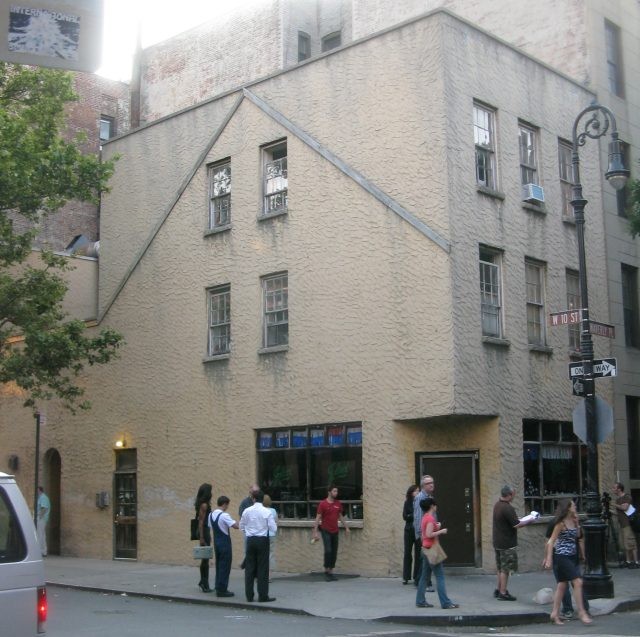Julius' in Greenwich Village
Introduction
Text-to-speech Audio
Images
A view of the bar in 2008

New York Times article on the protest at Julius'

Backstory and Context
Text-to-speech Audio
The building that would eventually become Julius’ Bar was constructed in 1826 in the Greenwich Village Neighborhood. In 1840, the building began to see use as a grocery store, and it remained as such until it was converted into Julius’ Bar in 1864. In the 1920s, the bar saw a great deal of activity serving as a speakeasy during the era of Prohibition. During these "dry" years, the bar was quite popular among jazz musicians and literary artists. By flouting the law, Julius’ Bar survived the Prohibition era and the establishment prospered as a local bar that reflected the people of the neighborhood. As a result, records indicate that by the 1950s, some of the gay men who had moved to Greenwich Village patronized the bar. The bar’s management responded in a variety of ways designed to discourage these customers owing to a city law that barred establishments from serving gay men. After the police raided the bar several times and fearing for the loss of their liquor license, bartenders would deny service to anyone they knew was homosexual and some would even harass gay customers.
On April 21st of 1966, several members of the Mattachine Society, one of the earliest gay rights activist groups, decided to try to test the New York City law against serving gay patrons. After notifying several reporters, members of the Mattachine Society staged what they called a “Sip-In” to test the law. The first bar owner where the activists hope to stop closed the bar while the next two establishments willingly served the men. When the activists arrived at Julius’ Bar they were denied service. The refusal was documented and used as evidence in court, and the ensuing trial led to a removal of the law against serving homosexuals.
According to Dick Leitsch, who was one of the four men who participated in the protest, the bartender initially set out four glasses for the men. At that point, Leitsch recalls that the four men went out of their way to state that they were homosexual. At that point, the bartender put his hands on top of one of the four glasses and said that he could not serve the men. This dramatic refusal was photographed and reflected the fact that the bar was raided by police for serving gay men just ten days prior. A failure to refuse service with witnesses and photographers would have likely resulted in the loss of the bar's license.
The protest was scheduled to happen at another bar, but the owner had heard about the plan in advance and closed his establishment to avoid a potential confrontation. In response, the four men chose Julius' specifically because of the recent raid. The bartender likely understood that his denial of service would provide a test case while also saving his establishment's license. According to Leitsch, the photograph of the bartender placing his hand over one of the men's glasses helped their case.
Julius’ and several other bars in the Greenwich Village tacitly supported the victory of the Mattachine Society and the removal of the local ordinance that required the State Liquor Authority to revoke licenses of bars that openly served homosexuals. From 1966 on, Julius' was known as a gay bar.
The significance of the protest, according to Leitsch, was that it served as a catalyst for further action. "Until this time gay people had never really fought back," Leitsch explained. "We just sort of take in everything passively, didn't do anything about it. And this time we did it, and we won."
Three years later, gay patrons at the Stonewall Inn launched an open rebellion against the continuation of police raids despite the end of the law that prohibited service to homosexuals. The Stonewall Rebellion became a crucial moment in the gay rights movement, but that protest could only happen after the end of the discriminatory law. On April 20th of 2016, Julius’ was added to the National Register of Historic Places.
